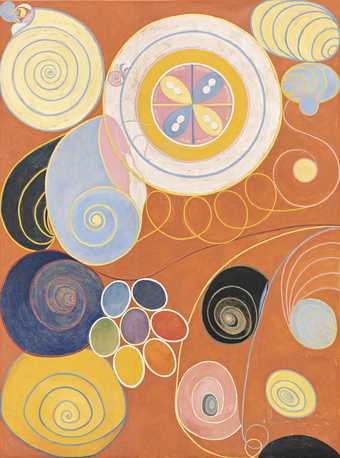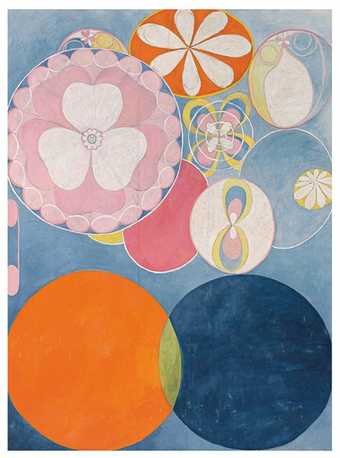We live with an art history that has excluded women for generations, and here was an extraordinary woman and it's just, you know, inspiring just the dedication and the sheer skill of her work.
For many of you watching this, Hilma af Klint may be, a new name in the history of art.
She was a Swedish artist born in 1862.
The really interesting thing about Hilma, is as early as her teenage years, she became very interested in spiritualism. So instead of conventional landscape and portraiture, she began to work on a really significant scale in works that are mind-blowing in their originality.
Hilma became very involved with a group of female contemporaries and together they set out to make real connections with the spirit world and this is a forum in which she began to explore abstraction through the medium of automatic drawings.
They combine both abstraction and symbolism, geometric form and organic naturalistic form in a kind of hybrid way, in a way that is completely unprecedented and shows a kind of mastery of understanding of visual notation and colour.
Towards the end of her life she took a decision, which I think was an interesting one. She decided that the world was simply not ready for her work. She was absolutely right, and so she put a 20 year embargo on her work so that after she died, the work could not be shared with the public for at least 20 years.
The exciting moment really is that I think now is the right time. The idea that in the early 21st century we're so now interested in our own ecology as we face climate and ecological threats to rethink the art of a hundred years ago through that same lens really understanding how art isn't apart from nature but deeply embedded in it seems to me a very worthwhile exercise.


